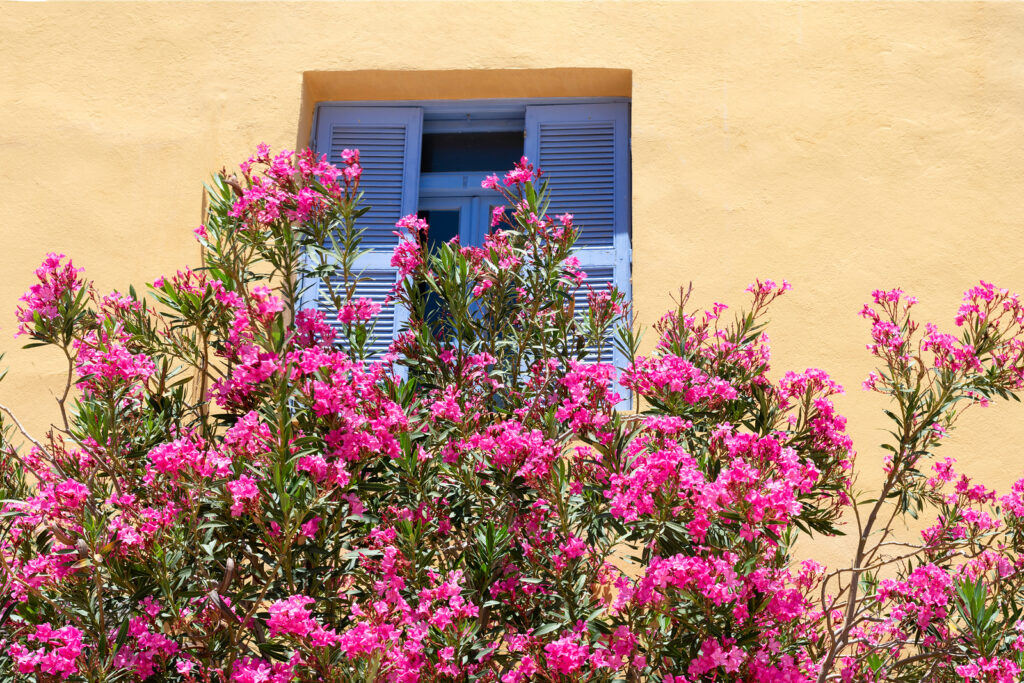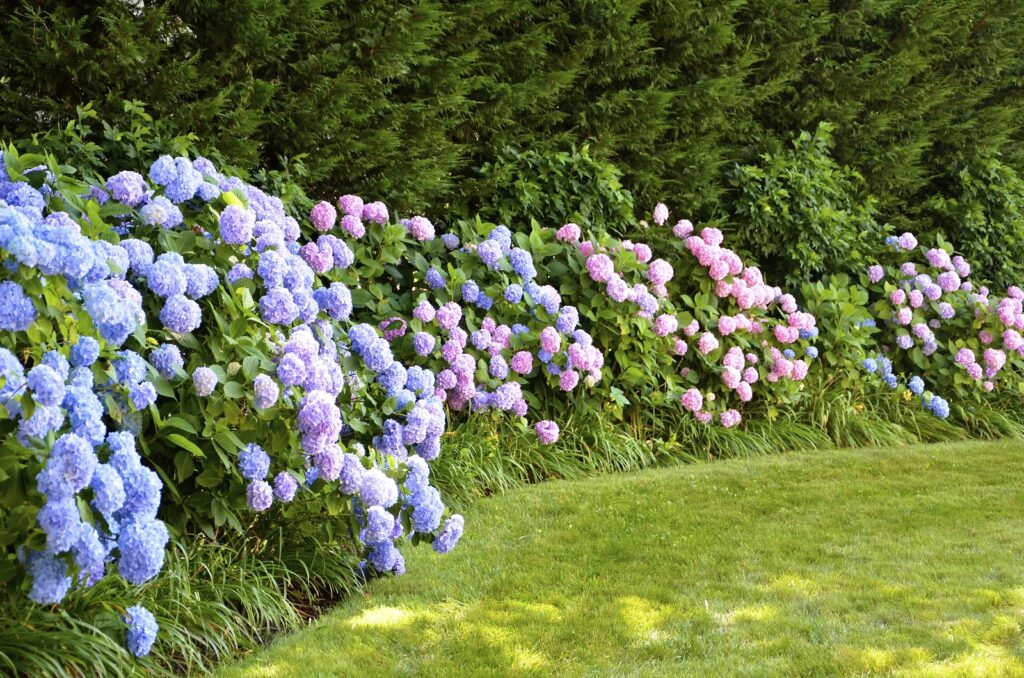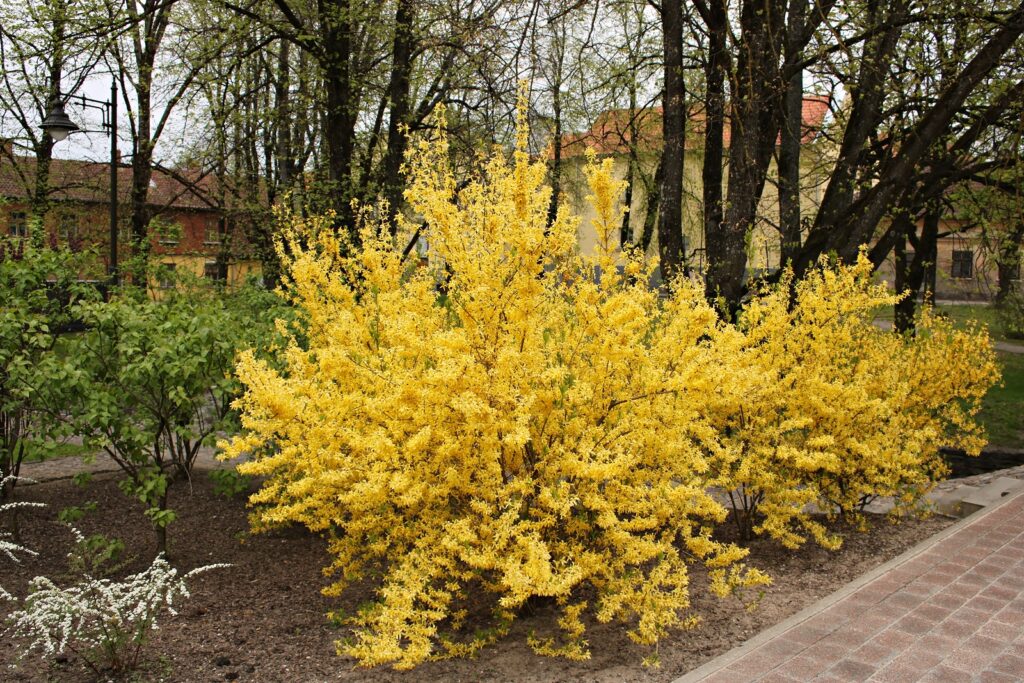Flowering shrubs are an important element in nearly every garden or landscape design. They not only bring color to the landscape they add structure as well.
Shrubs are woody-stemmed plants with a number of branches arising at or a little above ground level; shrubs lack conspicuous trunks.
All shrubs flower, but some have inconspicuous blooms. Shrubs with showy blooms can add significant bursts of color to the landscape often with a wide background of green foliage.
Because most shrubs are long-lived they are able to anchor and structure the landscape in ways less permanent and less substantial perennials or annuals do. Landscape designers consider shrubs along with trees “the bones” of a design.
Most flowering shrubs bloom in spring, but many bloom in summer. Many shrubs do extra duty by providing fall color or winter interest as well. Leaves that turn red or gold in fall bring another season of color to the garden. Deciduous shrubs with unusual forms or colorful barks add interest to the winter garden.

How flowering shrubs can be used in the garden
Here’s how flowering shrubs can be used in the garden:
Accent shrubs
A flowering shrub or shrubs can add a burst to the landscape. They can embellish or brighten a landscape in the same way jewelry or a scarf can accent an outfit.
Accent shrubs can be planted at the base of trees. They can be added to a corner or corners of a design. Accent shrubs can be used as a foundation planting in front of a house to draw attention to an entrance or walkway.
Accent shrubs can be added to mix flower beds or borders, adding color or textural repetition or rhythm to a design. Planting shrubs such as azaleas, ceanothus, or viburnums at regular intervals throughout a design adds repetition or rhythm.

Specimen shrubs
A specimen plant is one that is planted for its particular color, form, or overall beauty. A specimen shrub can stand alone in a garden, drawing attention to itself. A single flowering lilac, forsythia, rhododendron, gardenia, or hydrangea could be designated as a specimen.

Flowering border shurbs
A flowering shrub border or hedge can add definition and color to the perimeter of a landscape. Plants for borders and hedges can complement the scale of a design commonly determined by the size of the property. Shrubs along the perimeter of a landscape are often large—10, 15, or 20 feet high depending on the size of the property; shrubs toward the center are commonly smaller.
When planting a shrub border, consider the height and form of the shrub, leaf size and color, bark color, and, importantly, bloom color and bloom time.
Background shrubs
Flowering shrubs can serve as background shrubs as well. Many shrubs bloom early in the season then blooms give way to green foliage for the balance of the season. Once shrubs stop blooming the can serve as a backdrop for showy perennials and annuals.
Privet and holly are common background shrubs. The red berries of man hollies can serve as winter color; holly leaves are deep green and a good background for small shrubs and perennials that bloom in spring and summer.

Choosing flowering shrubs
Once you’ve decided on the basic garden design, shrub design is the first order of business. Here are a few considerations for selecting flowering shrubs for your design:
- What is the mature height and breadth of the shrub? Will it fit in the design? Does it fit in the scale of the design? Is the property large or small? Is the garden large or small?
- What color are the foliage and blooms? Do the colors complement other elements of the design?
- How long do the flowers bloom? When do the flowers bloom? Will the blooms be in the garden for a short time or for weeks or months? If a shrub is short-blooming, will additional flowering shrubs be needed to achieve a long sequence of blooms? Choose shrubs that are at their peak of bloom at different times of the year.
- Are the flowers fragrant? Is fragrance important? Shrubs with fragrant flowers can be planed near doorways or outdoor sitting or dining areas. Conversely, if a household member has fragrance allergies, it would be important to choose shrubs that are not fragrant.
- Are the flowers good for cutting? Cutting flowers for display indoors is often desired. Is a sequence of cut flowers important?
Also of interest:















